
© Richard Moran. (Click image for larger version)
Phoenix Dance Theatre’s current tour – Particle Velocity – has included Doncaster, Newcastle upon Tyne, Hull, Southport, York and Mold. The company is at the Linbury studio theatre at the Royal Opera House, 19 – 23 November.
“I am broadening my shoulders for some serious criticism,” says Sharon Watson, artistic director of Phoenix. Watson’s career is bound up with the company’s development. She trained at the London School of Contemporary Dance and performed with Phoenix for eight years before returning as rehearsal director in 2000 when Darshan Singh Bhuller was director. Watson subsequently became director in 2009, following Javier de Frutos.
The Particle Velocity programme reflects Watson’s ambition for Phoenix. Her own ballet, Repetition of Change to a commissioned score by Kenneth Hesketh, explores the complexities of DNA. “I hope that leaves something for the other choreographers to explore,” she jokes. The programme includes All Alight by Richard Alston choreographing to Maurice Ravel, Tender Crazy Love by Douglas Thorpe and Ki, Jose Agudo’s first work for Phoenix, inspired by the life of Genghis Khan. Clearly there are no limits for what Watson believes dance can encompass.
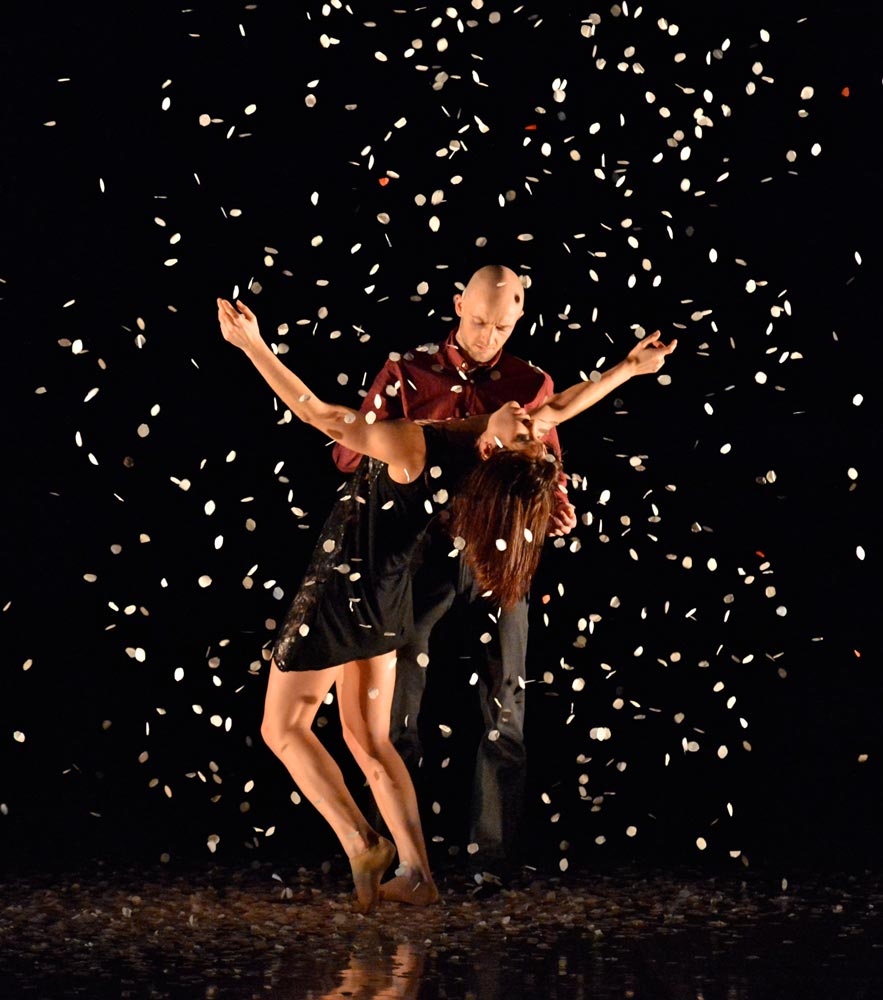
© Brian Slater. (Click image for larger version)
Giving audiences what they want
“I don’t assume that people only want one thing. I like to offer audiences a range of quality. The reaction on tour has been really pleasing. I smiled when I overheard somebody comment, ‘Wow, that was fantastic!’ “
“It is difficult maintaining a tour. It is not that venues are not interested in programming dance, but they have become more cautious. It costs money to put a company on stage – so you see longer runs of what sells. There’s no easy fix.
“There is, however, a great appetite for dance. I find that audiences want to understand everything they see – but I encourage people to enjoy the physicality and the staging of a piece. If audiences discover a narrative or other aspects for themselves, then that’s good too.”
Dance as a Michelin starred meal
“A dance programme can be like a Michelin starred meal. Some things you may not want to choose again – but I hope that we offer audiences something that really absorbs them.
“We have never claimed to be a classical company, but the work of Didy Veldman that we have done, See Blue Through, is classically based. Our current piece by Richard Alston, All Alight, is so full of line it could be on pointe. Audiences really respond to our dancers’ classical agility and strength.

© Brian Slater. (Click image for larger version)
“Phoenix is really inspired by the range of works and choreographers that London Contemporary Dance Theatre – as was – represented. That is intrinsic to how we have operated for the past 33 years. We have no reason to change the model; it works. A range of choreographers and works, new and established, is the approach that Rambert adopts too of course, but they tend not to be so rooted in the north.”
Working in Leeds
“Our base at Quarry Hill in Leeds is a lovely building but it doesn’t provide the scope to grow with our ambition. We only have one studio.
“I realised I was working in Leeds, a big city for rugby league, but knew nothing about the game when I was asked if I could do something with Leeds Rhinos’ anthem, composed by Carl Davis. The result has been performed by professional dancers with young people from the community. For them it was their first try at dance. Performing in front of thousands in the stadium at Headingley made them feel enormous. They really delivered.”
Under the London microscope
“Coming to London I know we are in for some proper scrutiny. This is a significant occasion for Phoenix. Some theatregoers don’t lift their eyes beyond the M25 to see what is being created elsewhere. I hope they will take time to discover something they don’t usually see. For us though, we are just busy getting on with it.”
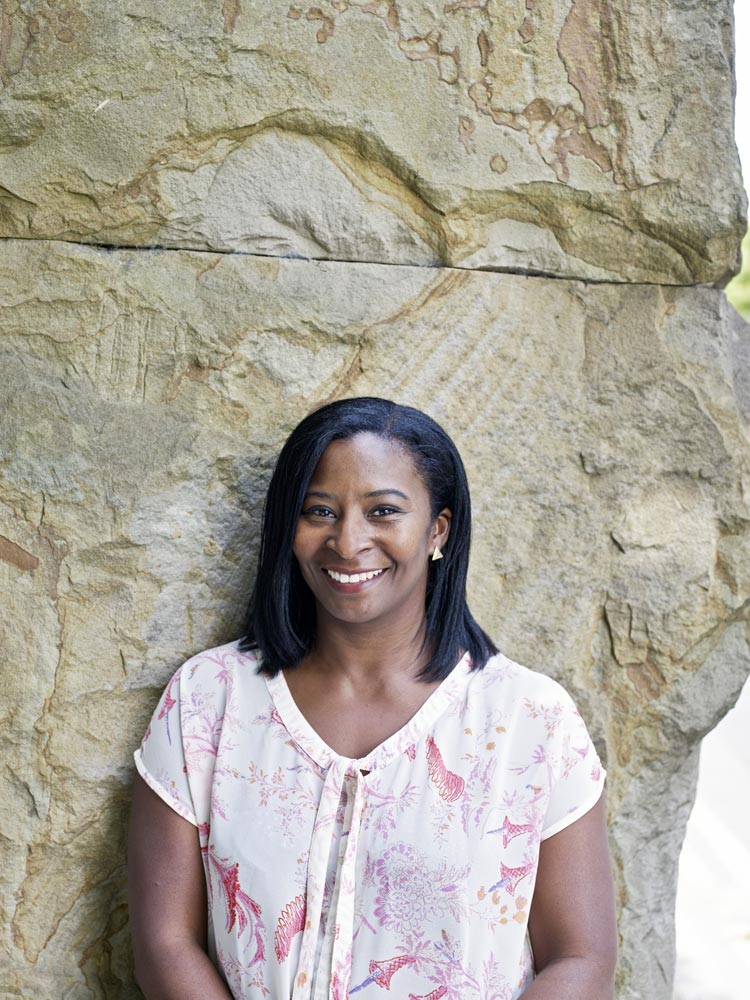
© Richard Moran. (Click image for larger version)
Phoenix has around 30 performances per year. “I would love to do more but when you invite choreographers to create work and you work out the programme, the year is just not long enough,” says Watson. “We need more dancers for our repertoire. We have eight; ten are needed – and apprentices too. Really I would like the company to be 15-strong.
“Funding is my biggest frustration. Compared to others, we receive peanuts. We have to strip everything back. That can be healthy – forcing me to scrutinise why I want something and concentrating on production values. Our focus is the dance language, not the lighting and fancy things.”
A chocolate box of choreographers
“Choreographers want to work with us. I have a whole chocolate box of choice. It’s good to build relationships but with current resources we can talk for three years to bring something to fruition.
“Choreographers with a known name and reputation still approach me, looking for commissions. There is a place for programmes just of one choreographer’s work but audiences look to see a range. I have heard people say, ‘I am not coming to see that again.’ That can wipe out a choreographer entirely.
“Classical ballet – with its strong narratives, its patterns and storyboard ebb and low – is a helpful model. There’s not usually a narrative in contemporary dance – but how to sustain two hours? Darshan Singh Bhuller with Planted Seeds showed it can be done, with the right subject matter and not in a literal way. I might be tempted to create something – if I had the topic and more bodies.”

© Brian Slater. (Click image for larger version)
Achieving the best: dance education
“I have concerns about dance education and the calibre of dancers who apply to join Phoenix. A certain training results in a certain career. It is the same with football and athletics. You cannot just give somebody some shoes. It is a question of how you physically change heads as well as bodies to become the best. They manage to achieve that balance in mainland Europe.
“A lot of people want to join Phoenix, I am saturated with CVs. There’s not one model we look for – but dancers have to calculate how they stand out, how to really achieve the highest levels. There’s an expectation that vocational schools will supply the need but 80 percent of our dancers are internationally trained. We are importing a lot of dancers – I struggle to find the dancers I need.
“The culture of dumbing down, not only in vocational training but in academic circles too in this country, is questionable.”
A woman to watch
To further her own professional development Watson has participated in DanceEast’s rural retreat for dance leaders and in the Clore Duffield Foundation’s leadership programme. “Normally, you don’t get enough chance to step away and talk to like-minded people. I did a lot of listening – and learned how to be bolder with my creative thinking. You do not always get it right and the need is how to recognise how best to seek out and listen to advice,” admits Watson.

© Brian Slater. (Click image for larger version)
“I was shocked and delighted to discover that I am on a top 50 list of influential women. There is a lot of expectation now. People are sitting and watching me! A lot of what I have learned managerially is about the big debates behind the scenes. How to be demanding of people, how to get the support that the company needs. “
Having everything
“You cannot be afraid if you want success. I want Phoenix to be seen on more stages here and internationally. I cannot have everything. Actually I do not see why not. I want Phoenix to be the best it can be.”
The current Phoenix tour concludes at the Leicester Curve on 28 November. In February 2014, in Leeds before touring, Phoenix Dance Theatre will premiere the first piece by Uri Ivgi and Johan Greben for a British company, alongside a new work by Darshan Singh Bhuller and a revival of Didy Veldman’s See Blue Through.










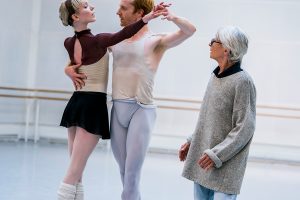


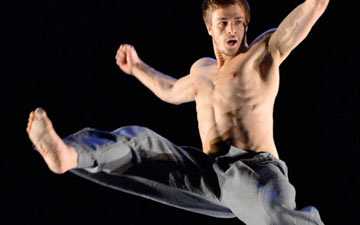
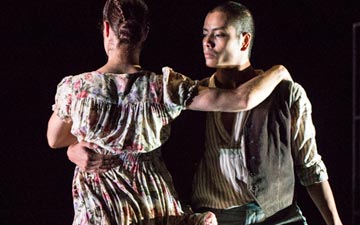
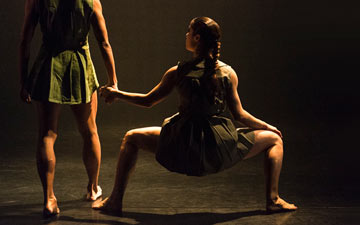
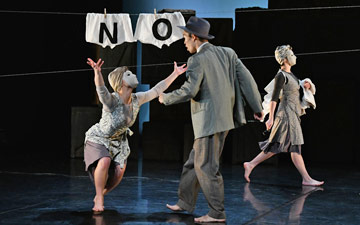
You must be logged in to post a comment.